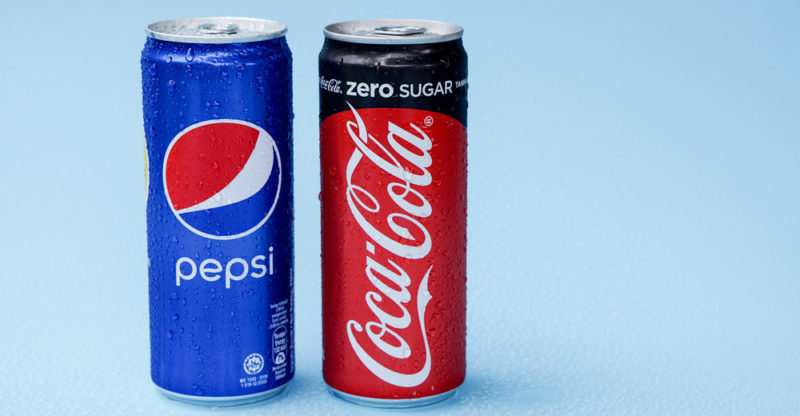We explain what demand and supply is, how it is classified and the factors that determine it. Also, what are its characteristics and some examples.
What is the demand?
In economic matters, demand is defined as the total of goods and / or services that can be consumed by one or more consumers in a market , at the different prices at which these goods are offered. It is also the purchasing action exercised by consumers when they seek to satisfy their needs through the goods available in the market (supply).
Demand is part of one of the two terms of the famous "law of supply and demand", according to which the price allocation system of a given market is governed , in which there are producers who offer goods and services, and consumers eager to obtain them.
These laws are determined by a mutually affecting relationship between supply and demand, which is also known as the "laws of the market" or the "invisible hand of the market . " In any economic analysis of a specific market, demand is considered as one of the initial factors for understanding the commercial dynamics that comprise it.
Law of demand
The law of demand establishes a negative relationship between the magnitude of the demand for a good and the price it receives in the market. Thus, the more a good or service costs, the lower its demand will tend to be; and for the same reasons as a good or service is in high demand, its price will tend to rise.
For example, if there is a great demand for winter items, they will go up in price; while in summer, when demand falls, prices will fall.
Types of demand

The study of demand involves various ways of classifying it:
- Aggregate demand. Composed of global consumption and investments , it represents the total expenditure of an economy during a specific period of time.
- Derived demand. Consequence of another type of demand, or of the conditions in which it occurs.
- Domestic demand. Sum of consumption in the public and private sectors of the same country.
- External demand. Need for goods from a country that comes from the international market or from a different country.
- Market demand. Also called total demand, it represents all the goods that a market can consume in its various manifestations.
- Over demand. Excess demand for a good or service that causes congestion or the inability to fully satisfy it.
Elasticity of demand
Demand is elastic, that is, it is not continuous and uniform but changes over time . Thus, we can speak of an elastic and an inelastic demand, according to the calculation expressed in absolute terms of the specific formula of elasticity: ? p = ?% Q D ÷ ?% P, where Q D is the quantity demanded and P the price of the product.
Elastic demand is one that can respond to a price variation, while inelastic demand responds very little to these variations .
Factors determining demand

The demand for a good or service is determined by:
- Specific market conditions. Like taste, culture , human conditions not attributable to the laws of the market but to the habits of the people.
- Seasonality Demand is modified in the face of cyclical or eventual environmental conditions such as the seasons of the year, times of drought or rain , etc.
- The tendency. Consumption patterns follow trends, that is, consumption patterns derived from interest in the market or from consumption habits that reproduce themselves and that can be studied and even predicted.
Variations in demand
The demand may vary according to its internal laws and external conditions, according to two different models of variation:
- Random variation. Determined by unpredictable factors such as fortuitous events, incidence of market promoters (celebrity stars, etc.) and other atypical behaviors.
- Cyclical variation. This is the name given to predictable demand since it obeys recurring market cycles, determined by its own nature of consumption or by constant external factors (climatic, environmental) that can be anticipated.
Claimants and bidders

In economics , consumers are called “demanding” , who require goods or services from a market; and "suppliers" to those who, precisely, offer said goods and services to satisfy their demands.
These two actors make up the market, and economic exchange occurs when both reach an agreement regarding the price to pay for enjoying the good or service.
On the other hand, in legal terminology one can speak of "offerors" and "acceptors" , to refer to those who propose a business and those who take part in it, respectively.
Demand curve
Historical trends in demand can and are usually represented by graphs, especially curves that allow the visualization of the upward or downward trend in consumption and therefore in demand for a given good or sector.
These charts are common in the study of market niches and allow you to plan strategies for them.
Demand and supply

If the demand for a good or service is the quantity that consumers require, then the supply is the quantity of this good that is available in the market.
Thus, if demand far exceeds supply, a shortage scenario of the good or product occurs, with the subsequent rise in prices.
On the other hand, if there is a very large supply of a good or service in the market, the bidders must compete with each other for the customer and they will do so by lowering the prices of their offered goods, in a situation of abundance.
Demand examples

Demand examples are all around us every day. The demand for basic services such as electricity or gas is quite constant, for example, but it may be that a country with climatic seasons its demand increases during the cold months, since the heating operates on gas and during the warmer months as well. since air conditioning consumes electricity .
Also, the demand for a certain type of drug may increase if an epidemic of the disease is announced, which can lead to shortages and subsequent price increases in dramatic proportions. Once the epidemic is over, on the other hand, demand will fall and with it the price of the specific drug.
Demand in law
In legal matters, the term "demand" has another meaning: any act of initiation of proceedings , that is, the first real step in the sense of a legal dispute.
It differs from the claim in that the lawsuit triggers the action, but they are usually presented together before a competent court to be processed.
The above content published at Collaborative Research Group is for informational and educational purposes only and has been developed by referring reliable sources and recommendations from experts. We do not have any contact with official entities nor do we intend to replace the information that they emit.
Veronica is a culture reporter at Collaborative Research Group, where she writes about food, fitness, weird stuff on the internet, and, well, just about anything else. She has also covered technology news and has a penchant for smartphone stories. .
Leave a reply
Your email address will not be published. Required fields are marked *Recent post

Sport: What Is It, Types, Risks, Features, Characteristics and Examples

Dogs: Emergence, Features, Characteristics, Feeding and Breeds

Story: Definition, Elements, Structure, Features and Characteristics

